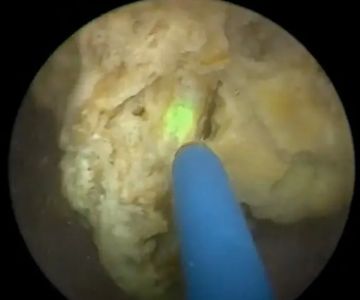Dealing with Dog Allergies: What Every Pet Owner Should Know
As a dog owner, one of the most challenging and often frustrating issues you may face is dealing with dog allergies. My own journey with dog allergies began unexpectedly, when I noticed that my dog, Max, started scratching incessantly, and his once shiny coat seemed dull and patchy. It didn't take long to realize that he was suffering from an allergy. If you've found yourself in a similar situation, you're not alone. Dog allergies can affect dogs of all breeds, sizes, and ages, and understanding how to treat them effectively is key to helping your furry friend feel better.
Understanding Dog Allergies: What Are They?
Dog allergies, like human allergies, are an immune response to substances that your dog’s body mistakenly identifies as harmful. These allergens can come from various sources, including pollen, dust mites, certain foods, mold, and even fleas. When your dog is exposed to these allergens, their immune system goes into overdrive, causing symptoms such as itching, sneezing, watery eyes, and gastrointestinal issues.
Interestingly, just like humans, dogs can develop allergies over time. Max, for instance, developed his allergy at the age of 4, and it took a while before I figured out the root cause. He started having bouts of itchy skin, and soon enough, I found that his allergy was due to a combination of seasonal pollen and a certain type of food he had been eating for years. Identifying the cause of the allergy is a crucial step in managing and treating it.

VCA Arboretum View Animal Hospital, 2551 Warrenville Rd, Downers Grove, IL 60515, USA
See DetailsCommon Symptoms of Dog Allergies
Recognizing the signs of allergies in dogs can sometimes be tricky, especially since many symptoms overlap with other health conditions. However, there are some common signs to watch for:
- Itchy Skin and Constant Scratching: This is perhaps the most common sign of allergies in dogs. If your dog is scratching excessively, biting their paws, or licking certain areas of their body, they may be dealing with an allergic reaction.
- Red or Inflamed Skin: Allergies often cause irritation, leading to red, inflamed skin. You may notice hot spots, especially on their belly, paws, or face.
- Sneezing and Watery Eyes: Just like humans, dogs can sneeze and experience watery eyes when exposed to allergens like pollen or dust.
- Ear Infections: Dogs with allergies often suffer from ear infections due to increased inflammation in their ear canals.
- Gastrointestinal Issues: Some dogs develop digestive issues like vomiting or diarrhea when they consume an allergenic food.
How to Treat Dog Allergies: Practical Solutions
Treating dog allergies requires a multi-faceted approach. While there’s no one-size-fits-all solution, here are some practical ways I’ve found effective in managing Max’s allergies:
1. Identifying the Allergen
The first and most important step in treating dog allergies is identifying the specific allergen causing the problem. This can be tricky and may involve trial and error. You can start by eliminating potential allergens from your dog's environment, including food and external factors like pollen or dust. If your dog's symptoms persist, it’s a good idea to consult with a vet who can help identify the cause through tests or elimination diets.
2. Switching to a Hypoallergenic Diet
If food allergies are the culprit, switching to a hypoallergenic diet can work wonders. I had to switch Max to a special prescription food that didn't contain the ingredients he was allergic to, and within a few weeks, I noticed a significant improvement in his skin and coat. If you're unsure about which food is right for your dog, it’s best to consult with your vet for recommendations.
3. Allergy Medications and Supplements
In many cases, allergy medications can provide relief. I started Max on antihistamines and steroid treatments under the guidance of our vet, which helped control his itching and swelling. Additionally, omega-3 fatty acid supplements have been shown to reduce inflammation and improve skin health. There are also natural remedies, such as aloe vera gel, that can soothe irritated skin.
4. Flea Control
Flea allergies are a common issue for many dogs. Even if you don't see fleas, your dog may still be allergic to flea saliva. Regular flea prevention, through topical treatments or oral medications, is essential in managing flea-related allergies. After implementing a strict flea control routine, Max’s symptoms significantly reduced.
5. Bathing and Skin Care
Frequent baths with a mild, hypoallergenic shampoo can help wash away allergens and soothe irritated skin. I found that giving Max regular baths, especially after long walks in the grass or woods, helped clear his skin of pollen and dust mites. Be sure to dry your dog thoroughly after a bath, as moisture can contribute to the development of skin infections.
6. Environmental Changes
Making some changes to your dog’s living environment can go a long way in alleviating allergy symptoms. For instance, washing your dog’s bedding regularly, vacuuming with a HEPA filter, and using air purifiers can reduce the presence of airborne allergens. If seasonal pollen is an issue, try keeping your dog indoors during peak pollen times.
Vet Visits and Allergy Testing
If your dog’s allergy symptoms persist despite your efforts, it's essential to seek professional help. A veterinarian can conduct allergy tests to pinpoint the exact allergens causing the issues. For some dogs, allergy shots or immunotherapy may be necessary to desensitize their immune systems to certain allergens.
Max's journey with allergies wasn’t easy, but with the right treatments and lifestyle changes, he’s now much more comfortable. It's important to be patient and consistent in managing your dog’s allergies. With the right approach, your dog can live a happy and healthy life despite their allergies.











